In winter when it is cold outside and I don't want to drive so far with the car, I just walk over to the cementary "Urnenhain" here in Linz and try my luck there. Since this cementary is populated with a lot of trees and has a lot of places for birds to hide, it is a good place for birds like the blackbird, the great tit, the blue tit the goldcrest, the Yellowhammer several woodpeckers and the nuthatch. Most of the hide in the undergrowth of bushes or in the trees. When the sun comes out on a cold winterday like this they start looking for food outside of their hides and this is the best time to take some pictures of them. Since a lot of bushes and trees don't have any leaves anymore it is a lot easier to spot the birds in winter since they don't have so many hiding places.
Common Blackbird:
One of the more popular birds you can find now in winter is the "Common Blackbird", most of the time they jump around on the ground and when they sense danger they either stay still or hide in the bushes. I was able to take pictures of a male and a female blackbird here. I always like how proud the blackbird looks when standing on the ground. Unfortunately these birds don't sing in winter, because I really love the song of the blackbird. It is one of the most beautiful songs I thing and I really like it because every time I hear it I know it is spring or early summer. :-) In winter they hide a lot in the bushes or jump around on the ground. In summer the male sometimes looks for a tree and sings from the top of the tree.
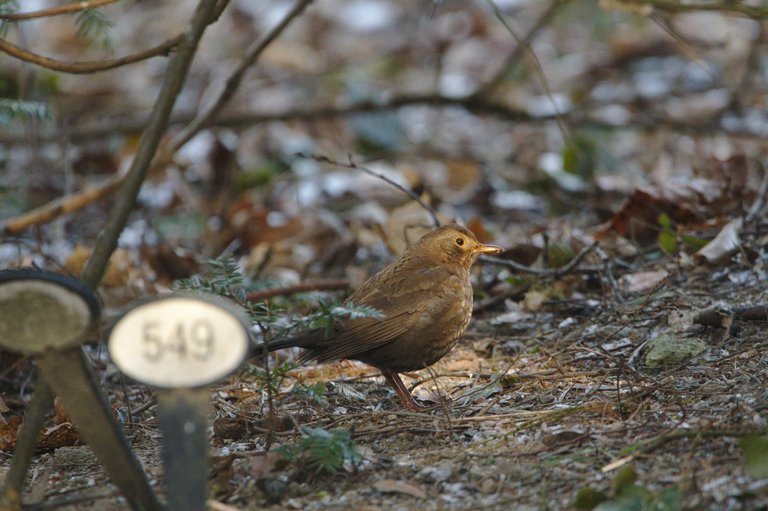
Female Blackbird on the ground. Picture: Florian Glechner.
| Camera used | Nikon D500 |
|---|---|
| Lens used | Sigma 150-600 mm lens |
| Filter used | none |
| Exposure Time | 1/400 Seconds |
| Aperture used | F6.3 |
| Focal Length | 600 mm |
| Time | 01:21 pm |
| ISO | 3200 |
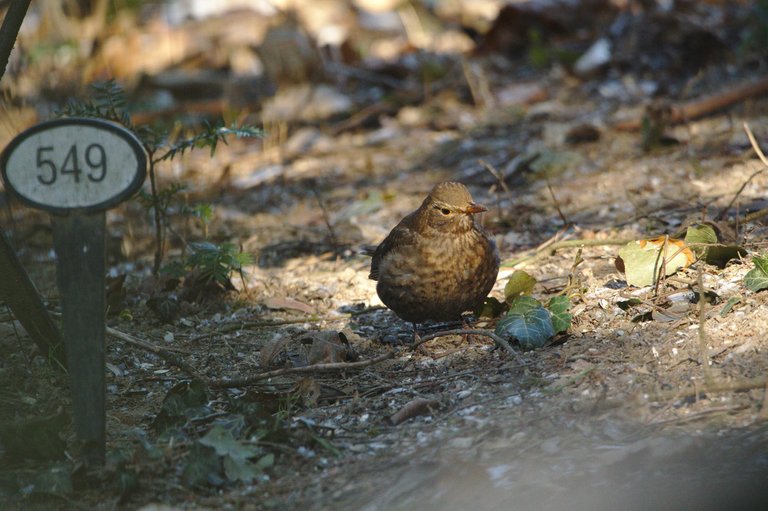
Female Blackbird searching for food on the ground. Picture: Flroian Glechner.
| Camera used | Nikon D500 |
|---|---|
| Lens used | Sigma 150-600 mm lens |
| Filter used | none |
| Exposure Time | 1/500 Seconds |
| Aperture used | F6.3 |
| Focal Length | 600 mm |
| Time | 01:22 pm |
| ISO | 3200 |
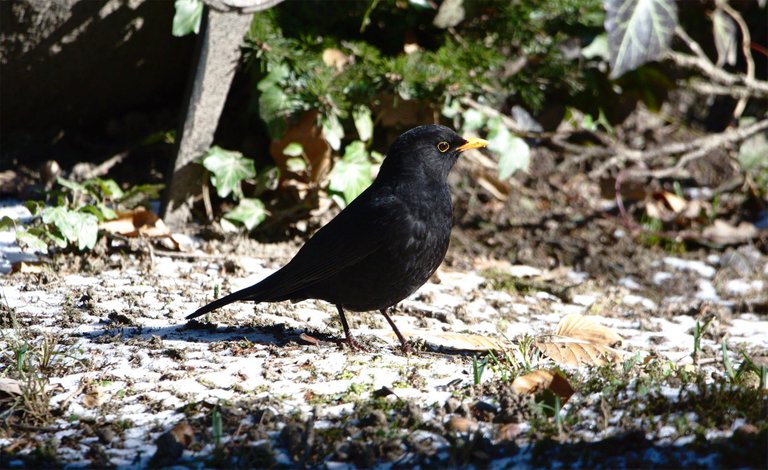
Male blackbird enjoying the winter sun. Picture: Florian Glechner.
| Camera used | Nikon D500 |
|---|---|
| Lens used | Sigma 150-600 mm lens |
| Filter used | none |
| Exposure Time | 1/2000 Seconds |
| Aperture used | F6.3 |
| Focal Length | 600 mm |
| Time | 01:04 pm |
| ISO | 2000 |
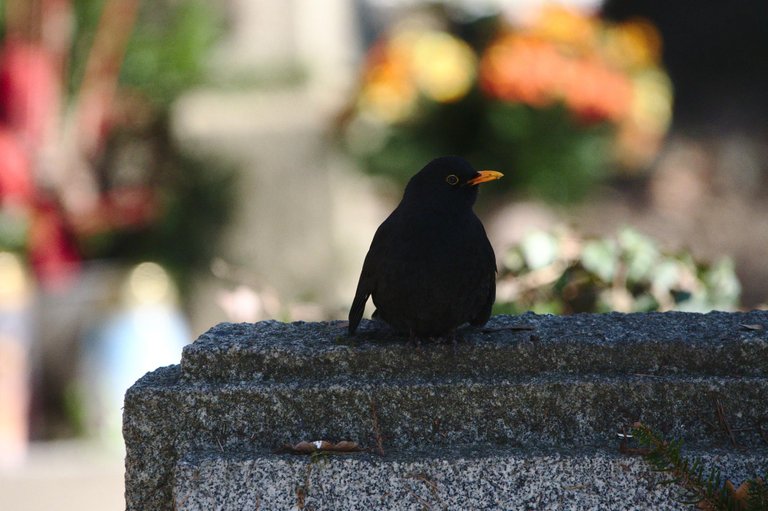
Male Blackbird on a tombstone. Picture: Florian Glechner.
| Camera used | Nikon D500 |
|---|---|
| Lens used | Sigma 150-600 mm lens |
| Filter used | none |
| Exposure Time | 1/1000 Seconds |
| Aperture used | F6.3 |
| Focal Length | 600 mm |
| Time | 01:12 pm |
| ISO | 2000 |
Great Tit
The Great Tit is one of the birds I see really often in Winter. It is also one of the birds that come to a feeder very often in Winter. The fact that it is a really common bird and that it feeds on seeds from the bird feeder helps you to find it. I see this bird very often hiding in conifers or directly at the bird feeder. The great tit is, like other tits, a vocal bird, and has up to 40 types of calls and songs. But still I have to admit that I like the song of the blackbird better.
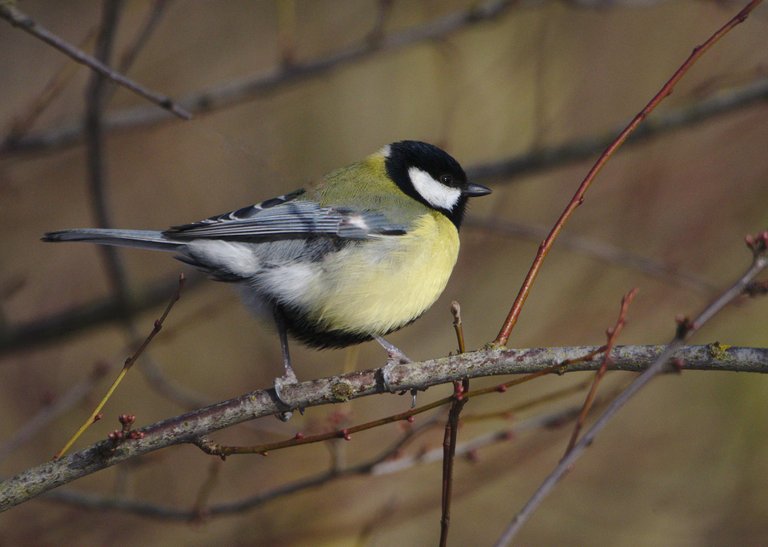
Great Tit in the light. Picture: Florian Glechner.
| Camera used | Nikon D500 |
|---|---|
| Lens used | Sigma 150-600 mm lens |
| Filter used | none |
| Exposure Time | 1/4000 Seconds |
| Aperture used | F6.3 |
| Focal Length | 600 mm |
| Time | 04:49 pm |
| ISO | 1600 |
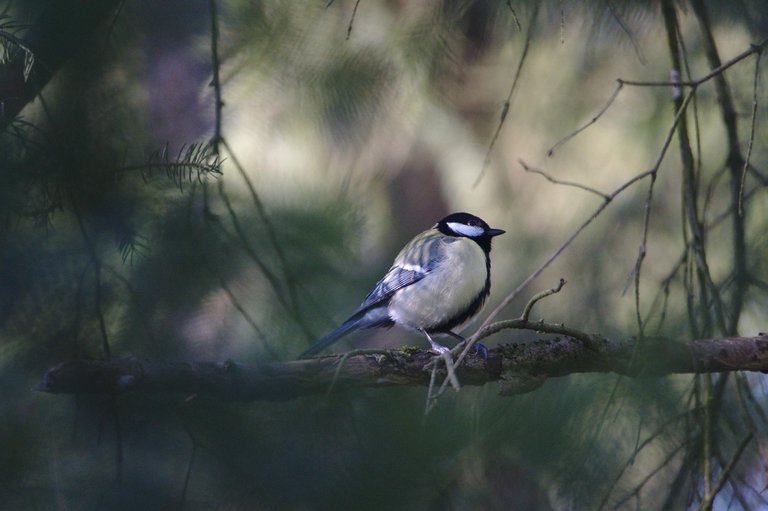
Great tit on a conifer. Picture: Florian Glechner.
| Camera used | Nikon D500 |
|---|---|
| Lens used | Sigma 150-600 mm lens |
| Filter used | none |
| Exposure Time | 1/1000 Seconds |
| Aperture used | F6.3 |
| Focal Length | 600 mm |
| Time | 01:40 pm |
| ISO | 2000 |
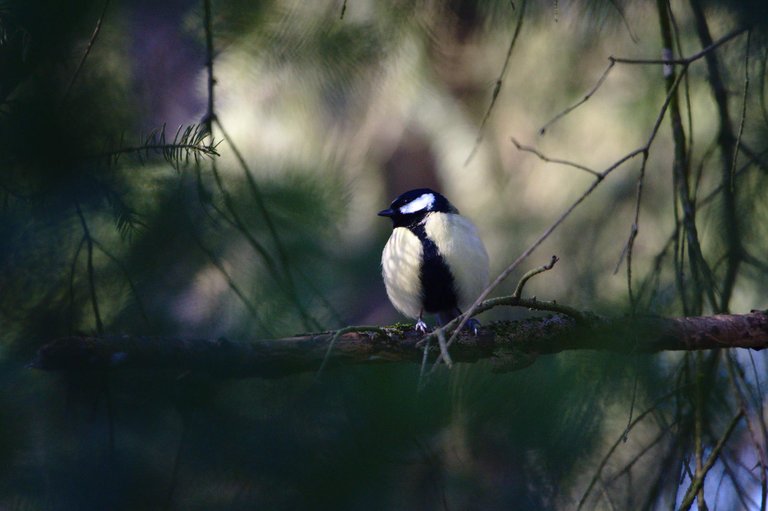
Proudly presenting its breast. Picture: Florian Glechner.
| Camera used | Nikon D500 |
|---|---|
| Lens used | Sigma 150-600 mm lens |
| Filter used | none |
| Exposure Time | 1/1000 Seconds |
| Aperture used | F6.3 |
| Focal Length | 600 mm |
| Time | 01:40 pm |
| ISO | 2000 |
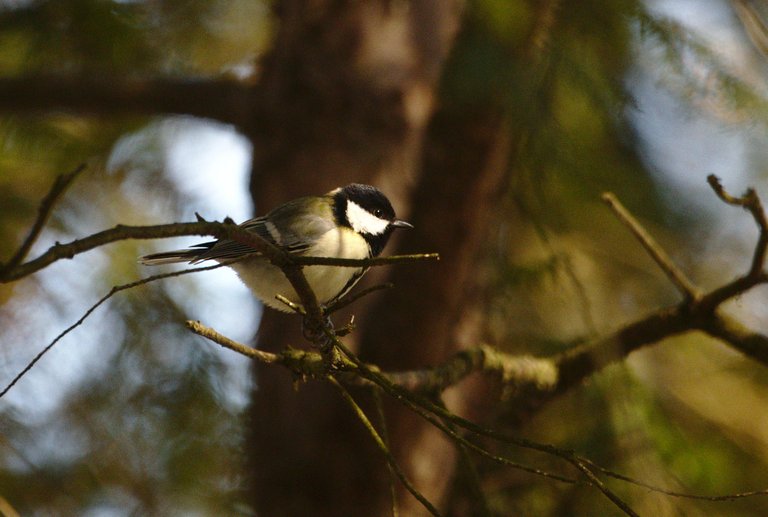
Great tit on a branch. Picture: Florian Glechner.
| Camera used | Nikon D500 |
|---|---|
| Lens used | Sigma 150-600 mm lens |
| Filter used | none |
| Exposure Time | 1/1000 Seconds |
| Aperture used | F6.3 |
| Focal Length | 600 mm |
| Time | 01:20 pm |
| ISO | 2000 |
Blue Tit
Another bird that is resident at the Cementary in Linz Urfahr is the blue tit, it is a lot smaller than the great tit and you can easily distinct it because it has a very beautiful blue head and also the flight feathers have a blue color in it. It is one of the smaller birds that also visits the feeder for seeds. It is also not very shy and you can see it very often since it is also a very common bird here in Austria.
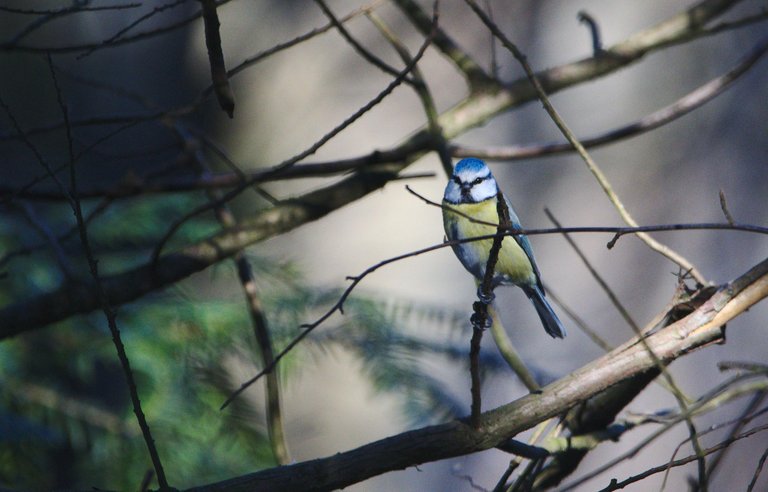
Blue tit on a small branch. Picture: Florian Glechner.
| Camera used | Nikon D500 |
|---|---|
| Lens used | Sigma 150-600 mm lens |
| Filter used | none |
| Exposure Time | 1/1000 Seconds |
| Aperture used | F6.3 |
| Focal Length | 600 mm |
| Time | 01:20 pm |
| ISO | 2000 |
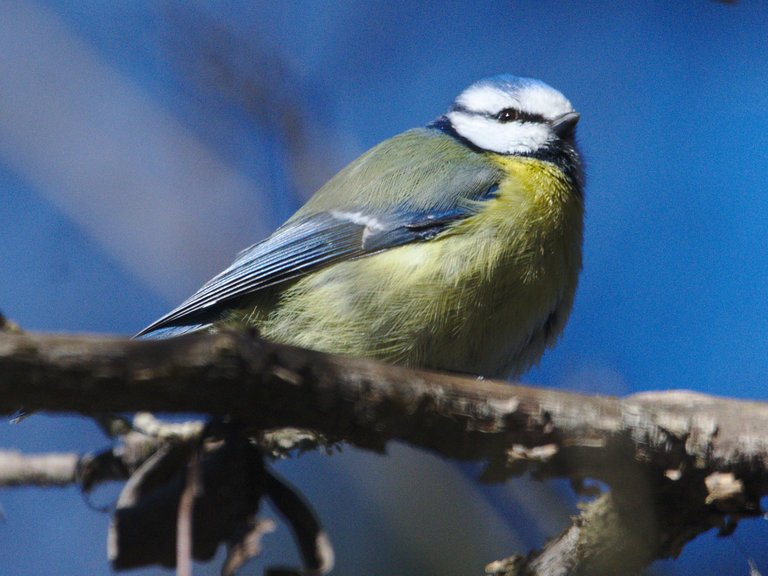
The blue tit is a lot tinier than the great tit. Picture: Florian Glechner.
| Camera used | Nikon D500 |
|---|---|
| Lens used | Sigma 150-600 mm lens |
| Filter used | none |
| Exposure Time | 1/1000 Seconds |
| Aperture used | F6.3 |
| Focal Length | 600 mm |
| Time | 01:20 pm |
| ISO | 2000 |
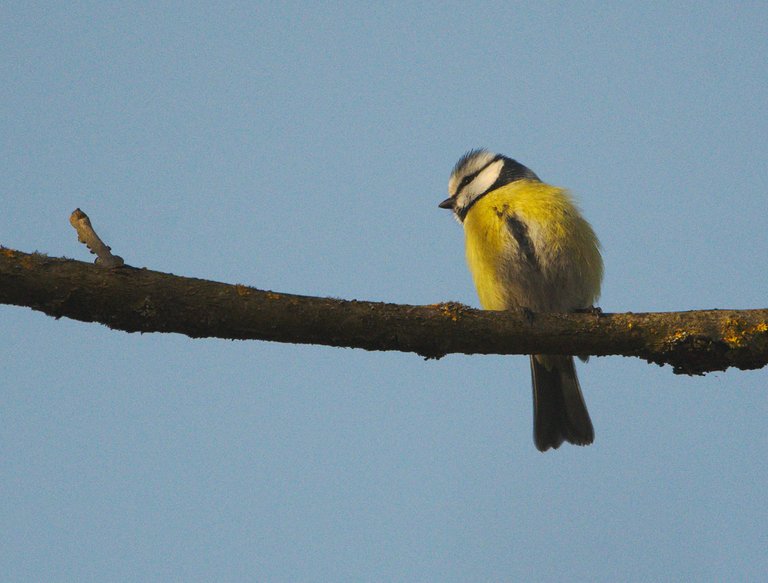
Bluetit. Picture: Florian Glechner.
| Camera used | Nikon D500 |
|---|---|
| Lens used | Sigma 150-600 mm lens |
| Filter used | none |
| Exposure Time | 1/1000 Seconds |
| Aperture used | F6.3 |
| Focal Length | 600 mm |
| Time | 01:20 pm |
| ISO | 2000 |
Yellowhammer
Most European birds remain in the breeding range year-round so you can find the birds in Spring, Summer, Autumn and Winter here in Austria. It has a really beautiful yellow color and due to this fact it is easy to spot it in Winter when there are no leaves on the trees.
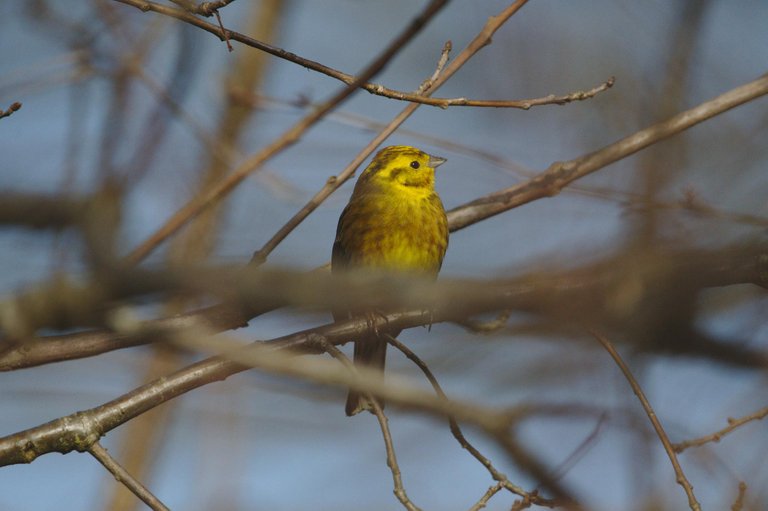
yellowhammer. Picture: Florian Glechner.
| Camera used | Nikon D500 |
|---|---|
| Lens used | Sigma 150-600 mm lens |
| Filter used | none |
| Exposure Time | 1/1000 Seconds |
| Aperture used | F6.3 |
| Focal Length | 600 mm |
| Time | 01:20 pm |
| ISO | 2000 |
Nuthatch
Nuthatches are compact birds with short legs, compressed wings, and square 12-feathered tails. They have long, sturdy, pointed bills and strong toes with long claws. Nuthatches have blue-grey backs and white underparts, which are variably tinted with buff, orange, rufous or lilac. It always looks very funny when they climb a tree, because the often run up and down the bark of the trees and don't fly very often, compared to other birds.
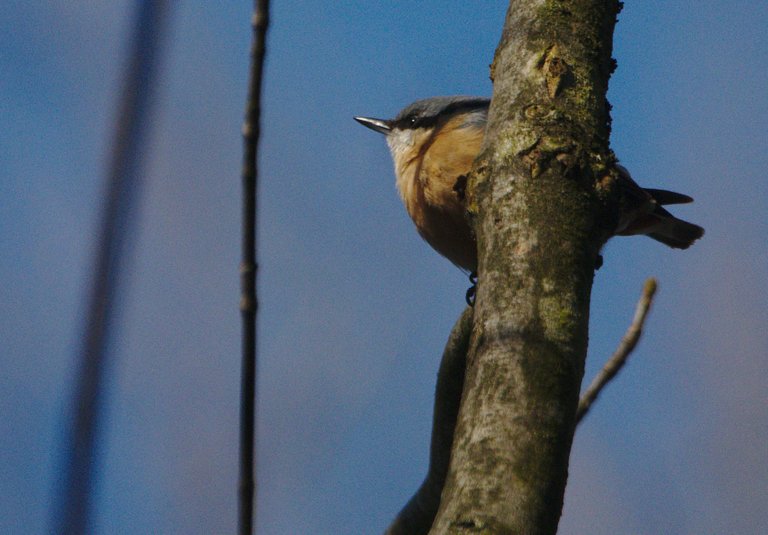
Nuthatch. Picture: Florian Glechner.
| Camera used | Nikon D500 |
|---|---|
| Lens used | Sigma 150-600 mm lens |
| Filter used | none |
| Exposure Time | 1/1000 Seconds |
| Aperture used | F6.3 |
| Focal Length | 600 mm |
| Time | 01:20 pm |
| ISO | 2000 |
Goldcrest
The Goldcrest is one of the tiniest birds that can be found here at the cementary. I was lucky when I saw it jumping around on the ground, it has a very distinctive golden crest witch gives this bird its name. They also like conifers very much and the goldcrest breeds in mature lowland and mountain coniferous woodlands.
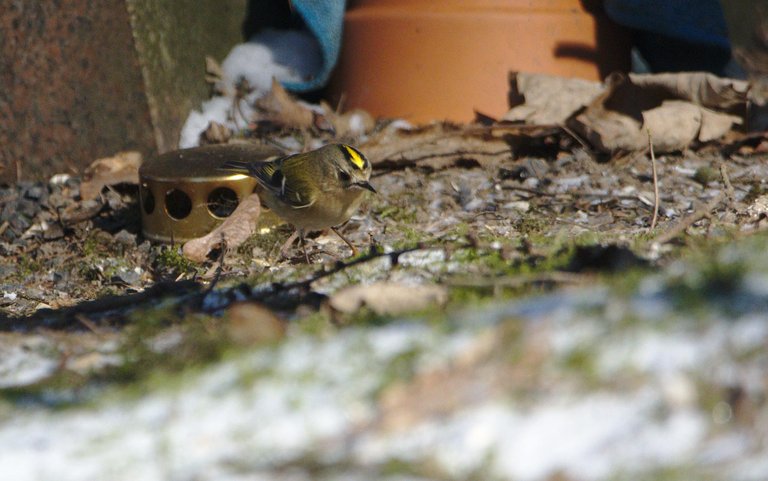
| Camera used | Nikon D500 |
|---|---|
| Lens used | Sigma 150-600 mm lens |
| Filter used | none |
| Exposure Time | 1/1000 Seconds |
| Aperture used | F6.3 |
| Focal Length | 600 mm |
| Time | 01:20 pm |
| ISO | 2000 |
Great spotted woodpecker
Since there are also a lot of old trees in the cementary, it is a good habitat for the great spotted woodpecker and also other kinds of woodpeckers. You can find this bird the whole year there but in winter it is easier to spot it since the leaves on the trees are missing. But you probably can find it with it's pecking sounds anyway even if there are leaves. Since the woodpecker only pecks old trees that already died.
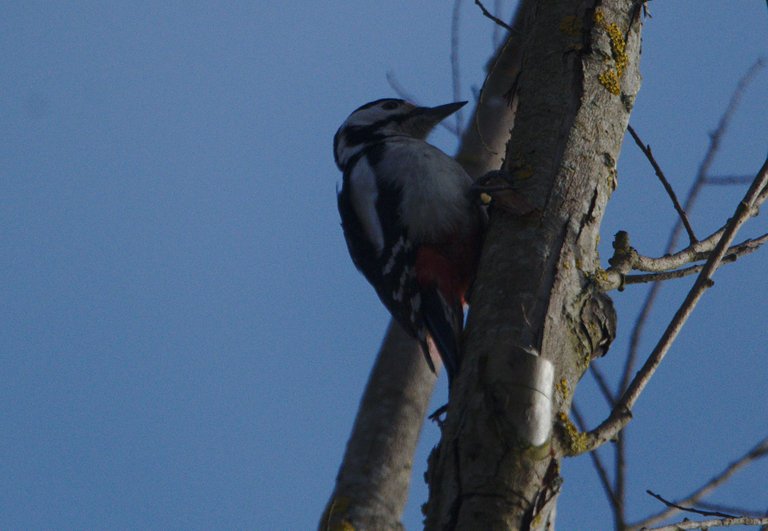
| Camera used | Nikon D500 |
|---|---|
| Lens used | Sigma 150-600 mm lens |
| Filter used | none |
| Exposure Time | 1/1000 Seconds |
| Aperture used | F6.3 |
| Focal Length | 600 mm |
| Time | 01:20 pm |
| ISO | 2000 |
When I was a kid we were getting so many yellowhammers around our birdfeeder in winter. Sometimes more than sparrows and great tits. Now they barely show up. I just hope its because they have enough food, not because there is less of them.
Oh that's sad, let's hope they find enough. There is generally ups and downs in population but many birds suffer from the insect decline we had during the last 20-30 years.
I can remember when I was a child we always had to clean the windshield of the cars from the dead insects, now I barely do it.
A lots of birds there!
Looks like a well worth visit.
Great photos as always!
Thanks a lot, yes it is a great cemetery that is embedded in a small forrest. So practically it is a forrest with some gravestones around trees. Very nice cemetery and my grandparents are buried there.
My grandmother really loved birds too and also had several feeders in Winter in her garden. I can still remember how she knocked against the window to scare away the neighbors cat when it came close to a feeder.
That a lot of birds pics you got. By going to the cemetery I wonder why the cemetery but the place will be so quiet 🤐. Lovely shot @florian-glechner . Am always impressive with your pictures.
Yes it is a quiet place, it is practically a small forrest with a creek with little water, and the gravestones are build around trees. Very nice place. And there are also some feeders for birds in the winter. It also has a nice squirrel population. I already showed the pictures of the squirrels from there some time ago.
And thank you for your flowers.
Stunning shots! 👍😀
In my city, many birds also live in our cemeteries. And also the same families, well, except for yellowhammer.
Thank you @ratel , yes I figured out that cemeteries can be a very good place for some bird and wildlife photography since a lot of the birds and other animals there are used to humans and come really close.
When I'm visiting Vienna I also like to visit the cemetery there because the animals are used to humans and come really close.
Your content has been voted as a part of Encouragement program. Keep up the good work!
Use Ecency daily to boost your growth on platform!
Support Ecency
Vote for new Proposal
Delegate HP and earn more